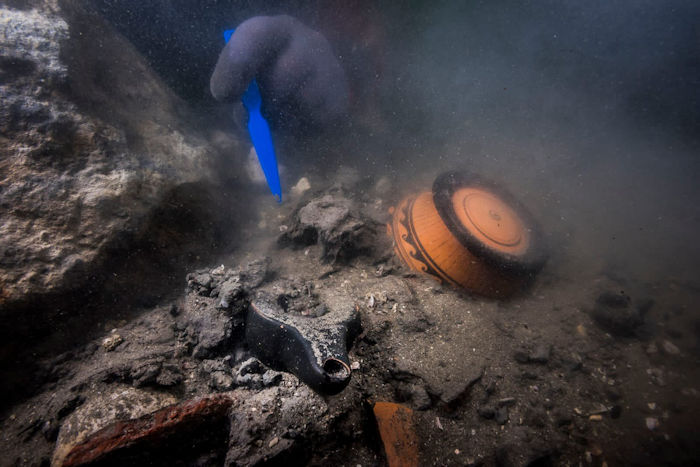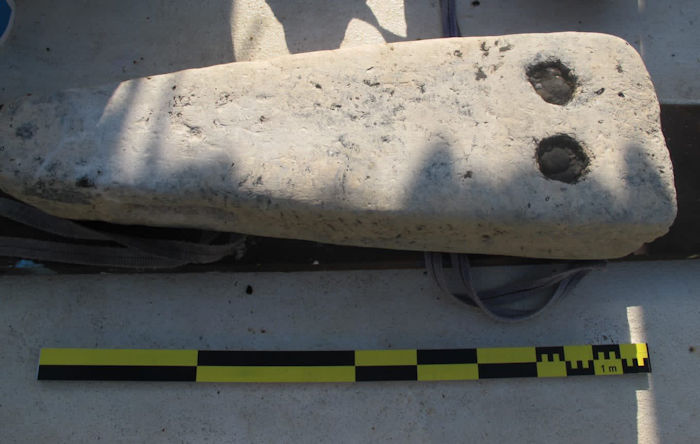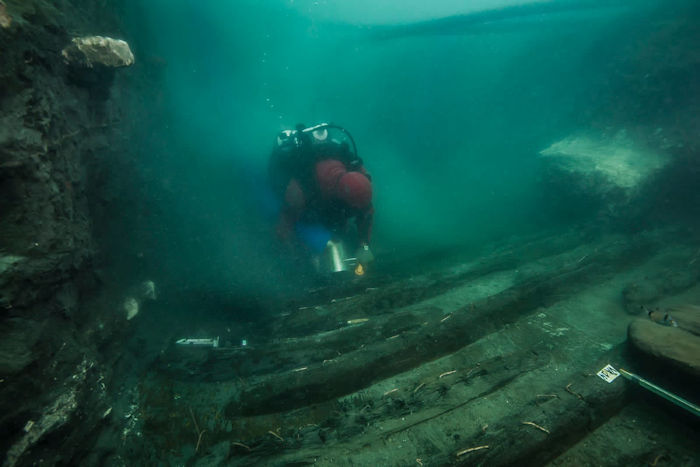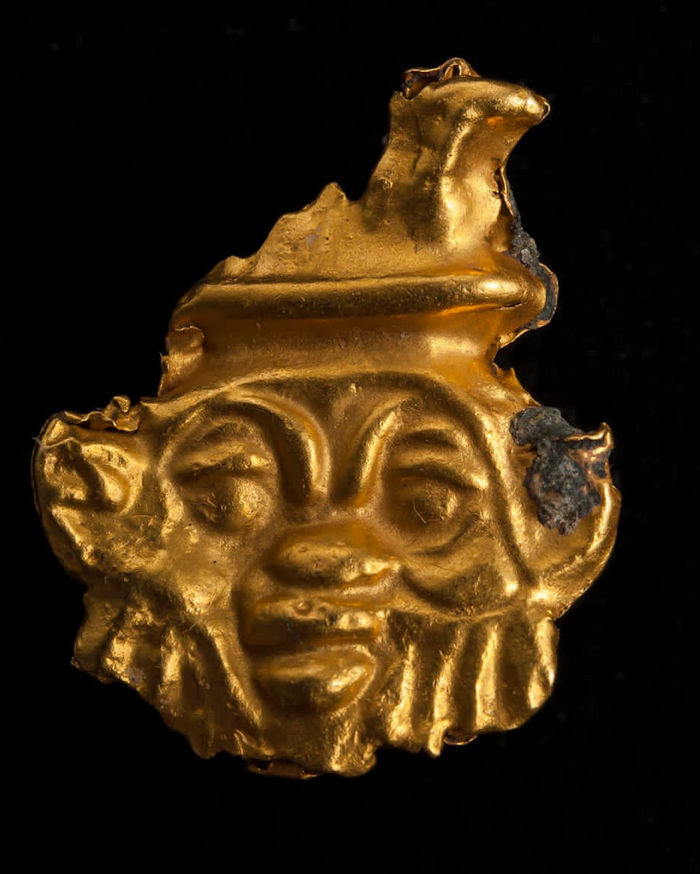Jan Bartek – AncientPages.com – The sunken city of Heracleion off the shores of Alexandria, Egypt, was once part of the kingdom of Cleopatra. In recent years, underwater archaeologists have come across many stunning submerged ancient statues, artifacts, and shipwrecks in this region.
The latest discovery reported by the Egyptian Ministry of Tourism and Antiquities, a team of researchers has found the wreck of a warship from the Ptolemaic era and the remains of a Greek funerary area dating back to the beginning of the fourth century B.C, in the underwater city of Heracleion in Alexandria’s Abu Qir Bay.

Credit: Egyptian Ministry of Tourism and Antiquities
“The ship was moored in the canal that flowed along the upper side of the Temple of Amun. It sank after being hit by huge blocks falling from the temple of Amun, which collapsed due to a cataclysmic earthquake that occurred in the second century B.C. The falling stone blocks pinned the ship down under the deep channel,” Mustafa Waziri, head of the Supreme Council of Antiquities in Egypt, said.
“A few days ago, the mission found the warship wreck under around five meters of mud at the seabed. This discovery may give us better information about that time period. The shipwreck was built using a mixture of the Egyptian and Greek methods. It was navigable in the Nile and the seas alike,” Ehab Fahmy, head of the underwater archaeology department at the Egyptian Ministry of Tourism and Antiquities, told Al-Monitor.
Fahmy also pointed out that this discovery is significant because this type of ship is rare, with only one previous finding dating to the same era.

Credit: Egyptian Ministry of Tourism and Antiquities
Fahmy also noted that the remains of a Greek funerary area indicate the presence of Greek merchants who lived in Heracleion city at the time. “These merchants controlled the port, which meant the entrance to Egypt, and they erected their funerary temples near the main temple of Amun,” Fahmy said.
“This discovery is a major addition to Egyptian antiquities. It dates back to the Ptolemaic period and was found in the city of Heracleion, which for centuries was the largest port in Egypt on the Mediterranean. The city was established in the 26th Dynasty — that is, before the founding of the city of Alexandria itself by Alexander the Great in 331 BC,” Hussein Abdel Baseer, director of the Antiquities Museum at Bibliotheca Alexandrina, told Al-Monitor.

Credit: Egyptian Ministry of Tourism and Antiquities
“Several earthquakes followed by tidal waves caused land liquefaction, causing the collapse of a 110-square-kilometer (68-square-mile) section of the Nile Delta beneath the sea. The cities of Heracleion and Canopus that were submerged were rediscovered by the IEASM mission in cooperation with the underwater archaeology department at the Ministry of Tourism and Antiquities in 1999 and 2001, respectively,” the Ministry of Antiquities said in its statement,
The Al-Monitor reports, “Abdel Baseer said the discovery is unique. He said, “Recently, we have been extracting coins or small antiquities, statues, pots, and figurines of the kings of the 26th Dynasty. This find pushes us to review historical findings and the movement of the trade before establishing the Alexandria port.”
IEASM head Frank Goddio said in a statement on July 19 that the discovery of such ships from that time is very rare and that Hellenistic ships of this type were heretofore completely unknown. The only other comparable discovery is the Punic Marsala Ship dating to 235 BC.

Credit: Egyptian Ministry of Tourism and Antiquities
Goddio added that preliminary studies indicate that the warship was more than 25 meters long. He noted that the hull was built with classic traits of that era, but also shows features of ancient Egyptian construction.
According to Fahmy, “Egypt has a large volume of sunken antiquities. The recent discovery consists of the remains of only one city that was a trade hub in Egypt.”
See also: More Archaeology News
Abdel Baseer believes that sunken antiquities will become even more important in the world of Egyptian antiquities. “Numerous antiquities can be found in the Red and Mediterranean Seas as well as in the Nile,” he said, adding that there should be an underwater museum for antiquities sunken in the Mediterranean and the Red Seas.
![]()
Article in Spanish – here
![]()
Article in Portuguese – here
Written by Jan Bartek – AncientPages.com Staff Writer





